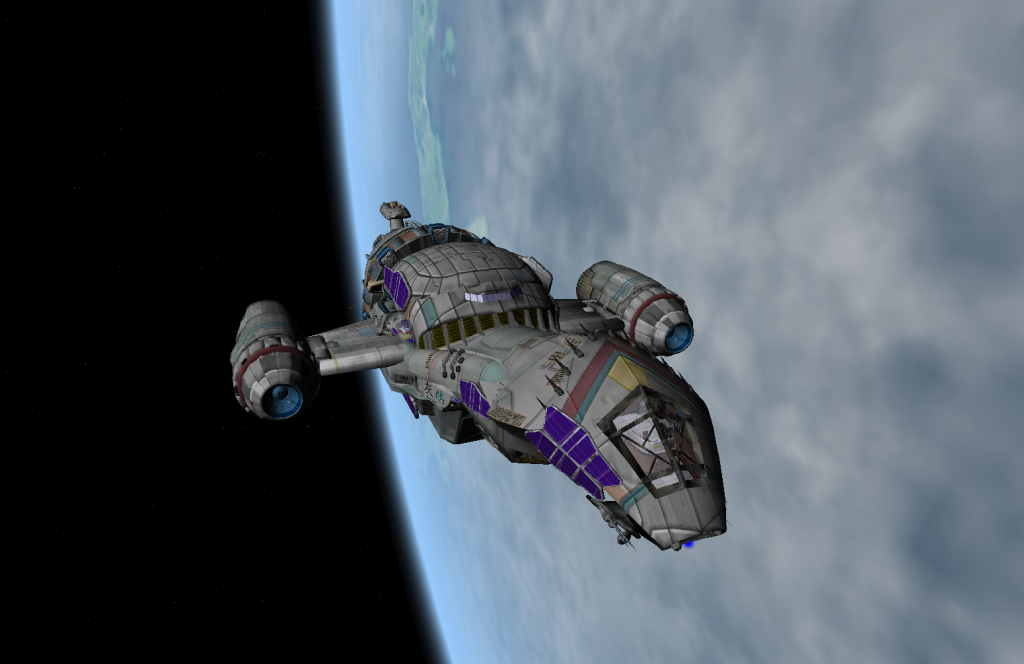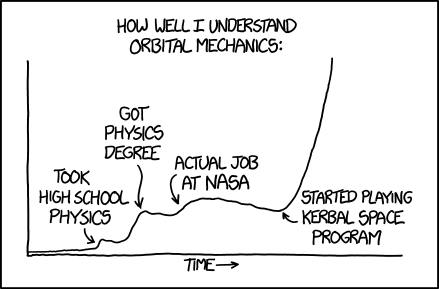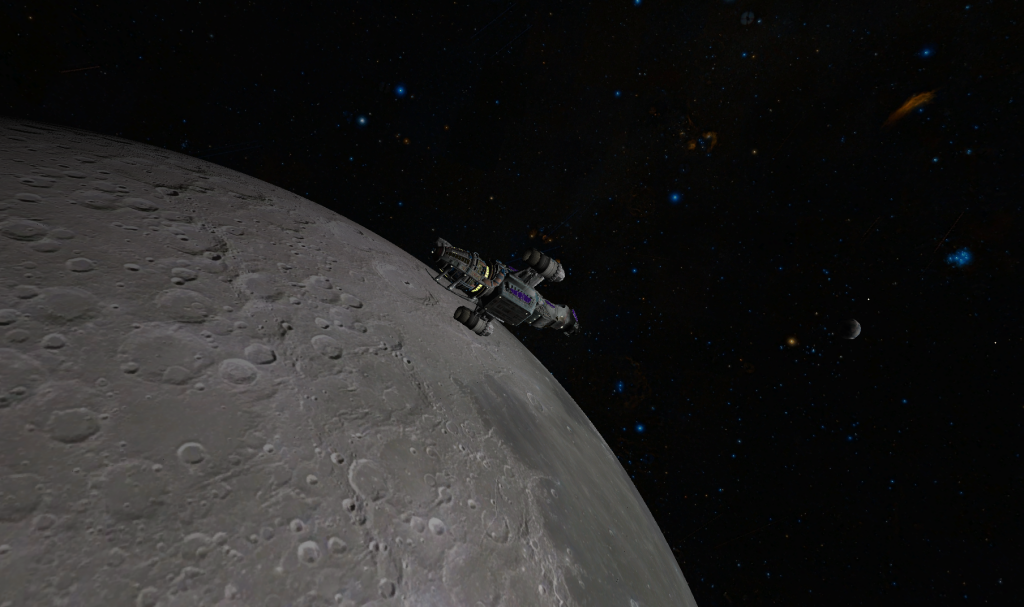Some years ago, I attempted to land on the moon.
Okay, it was the moon in the astrosim Orbiter. But it was, in logistical terms, still a huge challenge; Orbiter is a simulation, after all. So I decided to make things a little bit easier on myself. After all, I could learn the necessary astrophysical calculations to do it as NASA did in the 1960s. Or I could use the future! The science fiction future of Firefly, to be precise. I figured that the main challenge would merely be the limits of my vehicle. So, I postulated, if I was to use a high-tech scifi spaceship, it would be easy! I wouldn’t need to worry about trifling matters such as calculations. And I could not have been more wrong.
If terms like Hohmann Transfer are familiar to you, you may appreciate just how naive I was at thinking more thrust & fuel would remove the need to understand gravity. Orbiter didn’t have any fancy visualisation of orbits, delta-v and manoeuvres; of which (at the time) I was largely ignorant anyway. So how did I go about it? With balls in hand of course, pointing Serenity at the moon and slamming the throttle LIKE A PRO.*
A short stint of time acceleration later, my ship neared the moon. I figured it looked pretty close, so I’d probably wait until I started falling down toward the surface before braking my fall by thrusting away from it. But that wasn’t what happened. As I watched, the moon crept up, filled the screen for a while, then passed by and began to shrink away. No problem! I turned to face the moon again, then hit the engines. A bit more time acceleration. Serenity was still getting further away! Arghh! MOAR THRUST. Finally, the ship headed back toward the moon.
Only to miss it again completely.
This went on for a good while longer than any sensible person should persevere in a computer game. I’d circled Lunar more times than an indecisive shark weighing up a surfboard for nutritional value. So I did what any idiot without a flight director would do. I pointed directly at the moon and kept on thrusting.
When I did eventually land on the lunar surface, it was at a speed more ideally suited to escaping the sun’s gravity than a lunar touchdown. I’d had to cheat (even more) and completely refill Serenity’s tanks at least 3-4 times. I would probably have been fired from the Apollo programme for gross misuse of spaceflight.
So what’s the moral of this little anecdote? Well, since that ill-fated attempt, I have become rather fond of Kerbal Space Program, which shares some similarities with Orbiter: namely its faithful representation of astrophysics. And no disrespect to Orbiter (which is still the more realistic), once KSP demonstrated how orbits actually work, I understood space travel properly for the first time in my life.
It doesn’t matter that Kerbin’s values are different to Earth’s. It doesn’t matter if material stress, thermal dissipation and other minor details are omitted or unrealistic. Because its the orbital mechanics, the basic concept of masses moving in elliptical paths, how all speed is relative, how travel is about changing velocity not sustaining it, how reaching space is a matter of going so fast you perpetually miss the ground… that teaches us in a way that paragraphs cannot.
This is not something that’s been lost on several educators- many of whom have begun to enshrine Kerbal Space Program as a tool with great teaching potential. In this example, a physics teacher challenges his Advanced Placement class to put 3 Kerbals on the Mun, then bring them home safely.
But this is only the beginning. I recently backed the kickstarter game Koe, a JRPG designed to teach the player Japanese. The important point here is that it is being designed as a game first and foremost, with the player’s enjoyment at the core. Because if the game is enjoyable in its own right, the learning will flow of its own accord; just like in KSP. I will probably be writing more about Koe later.
Games engage us on so many levels, they can demonstrate advanced concepts in a way that brings them to life and their immersive potential is only getting better. Maybe one day, games will be integral at all levels of education.
I certainly hope so.
( As a minor addendum, I recently re-attempted the flight to the moon with Serenity. Not only did I not crash, I didn’t even use a fifth of one fuel tank. Score! )
(*) - Or not. As any kids mascot from the 90s will tell you, "Winners calculate their Delta-Vs"



